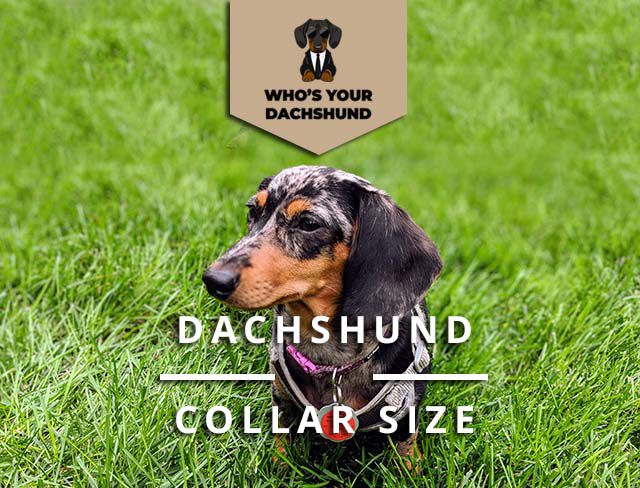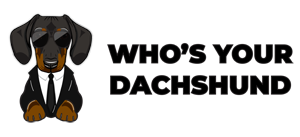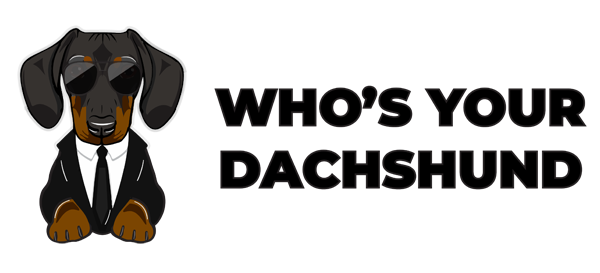
Dogs are friendly creatures, but they don’t always play well with others. Thi’s why it’s essential to recognize the importance of a safety collar. Not only does this accessory protect your pup if he happens to get tangled up in something, but it also helps you keep tabs on where they’re running off to next. This article will go over all the various types of collars that you can buy for your Dachshund and what pros and cons each one has.
When picking out a Dachshund collar, you’ve got to keep a few things in mind. The size of the dog collar is one of these considerations. Generally speaking, you should buy a collar that’s not going to be too loose or too tight.
Table Of Contents
- Introduction
- Different Collar Types For Different Personalities Of Your Dachshund
- Choosing The Suitable Collar Type
- How To Measure Your Dachshund For A Collar
- Dachshund Collar Types: Collar Types Are Also Important To Consider
- Easy To Adjust With Clip-on Tabs For Dachshund Pros And Cons
- Conclusion
Introduction
Choosing The Suitable Collar For Your Dachshund
When selecting a collar, consider the size of your pet’s neck. You want to choose a collar that fits snuggly but is not so tight that it can cause damage. If you have a puppy, you may have to hold off on buying that collar for a few weeks or months until your pup’s neck is more significant.
Choosing a collar for your Dachshund may seem like an easy task, but it isn’t elementary. You can take several different factors into account, as your dog’s personality, the size of their neck, and the dog’s personality.
Dachshund Collar Personality
Choosing a dog collar is about the size of your dog’s neck and how they act. A Dachshund is an active dog, and it likes to roam. If you have a very timid or hyper dog, you may want to consider a collar that comes with an easy-to-use buckle system that you can open easily by pulling on it or snapping it. If you have a typical Dachshund, then a buckle system may not be the best choice for you.
Different Collar Types for Different Personalities of Your Dachshund
Soft or Flexi collar
Generally, these collars are not recommended. These collars are made from soft cloth or other materials, which gives your dog an easy and natural way to move around the collar at all times. However, these collars can cause choking risks too. That is why we recommend you get a dog harness instead to reduce that risk.
Rough Collar
These collars are made from thick material, and they’re designed by using different types of chains, spikes, hooks, etc. These collars are made with the purpose of a more firm grip over your dog. These collars are meant for hunting dogs which need a more secure collar for different activities.
Harness
The harness is one of the most popular dog harnesses because it’s more comfortable and has less risk than any other type of collar mentioned above. The harness goes through your dog’s body, and the leash goes around your dog’s chest and back parts instead of the neck part. That is why it reduces the choking risk mentioned above to zero.
If you feel unsure about how to measure your dog, then make sure to check with a professional dog trainer or vet. They can help you figure out the right size for your furry friend!
No Collar
Because of its wide usage, almost no collars don’t have a collar attached to the dog. No-collars usually have straps or harnesses which go around the dog’s neck and chest. Some dogs prefer wearing this type of collar due to its comfort for the pet.
Dog-friendly collars
Mostly, these collars are not recommended because they can cause choking risks for your pet. However, if you can’t find a suitable collar for your dog, this type of collar can be suitable for you to consider.
Choosing the Right Collar Type
A suitable collar for your dog is not a choice to take lightly. There are many different collars styles to choose from, and some are better suited for certain types of dogs and personalities. Here, we’ll cover the differences between those two types of collars, as well as what to look for when choosing one of them.
Collars serve little purpose unless they’re attached to a dog. Most dogs are happier with a collar than without one. However, many collars are available, ranging in price, convenience, and general style. Like everything else in life, there is an appropriate time and place for each collar type. The best way to start is by determining your dog’s personality and lifestyle. Are they more active or laid back? Will the collar be a part of your interaction with them, or is it for training only?
Some items to consider:
1. Is your dog a “puller,” meaning that they enjoy playing with their leash, and you find yourself constantly correcting the behavior? Try a padded leash instead of standard nylon. If you do not have access to padded leashes, try a standard nylon leash with the appropriate martingale.
2. Is your dog a “runner,” meaning that he can slip out of a collar and find great joy and freedom in running-away from you? Look into harnesses. These are designed to be worn without a leash and will keep your dog on your property.
3. If you’re training a puppy, or if you have an aggressive/unruly dog, consider using the gentle leader. It is placed over the dog’s head, with adjusted straps going behind their ears and under their mouth. They are very effective for dogs that love to pull on their leash.
4. If you have a small dog, look for a head collar instead of a standard collar. The collars are simple to put on, and they are comfortable for small dogs to wear, and they do not have any hard edges that would be uncomfortable to the dog’s neck or throat. These collars are also safe to wear outdoors without running the risk of other dogs pulling or chewing your dog’s skin.
5. For added convenience, try a retractable leash with a harness. It is especially great for running dogs, as you can unlock the collar at the end of your walk and allow your dog to run freely without getting tangled in a leash.
While there are many options available to you, I hope this guide helps you determine what you’re looking for when shopping for pet supplies. Please contact us for any pet product advice/purchases or more detailed information about our products.
How To Measure Your Dachshund For A Collar
It’s crucial to select the correct size collar for your dog. It should be wide enough so two fingers can fit between it and the dog’s neck, but not so loose that it makes it difficult to wear for extended periods.
Step 1: Take a measuring tape or a piece of string and wrap it around your dog’s neck where you want the collar to sit. The tape should fit snugly without being too tight. Please don’t wrap the string around the dog’s head because it could get caught on something and choke your dog.
Step 2: If you’re using the string, measure it and divide by three for a half-inch measurement (Remember to round up to the nearest inch). Place that length where you want your collar to sit, then make a mark about an inch up from that spot. It will be your starting point for a new measurement.
Step 3: Wrap the string around your dog’s neck again, making sure it’s not too tight. Mark the spot where the end of the string overlaps to get your actual collar size.
Step 4: Add 2 inches for a buckle collar, 1 inch for a martingale or slip collar, and about ½ inch to ¾ inch for a harness or step-in style collar. Most Dachshunds will wear a 16-inch collar or less, depending on the length of the body they have.
Step 5: Measure your dog’s neck carefully to be sure the collar fits correctly. If it’s too large, you can always add or subtract from the measurement to get a custom size. It may also be necessary to purchase different sizes for different breeds and body lengths.
Dachshund Collar Types: Collar Types Are Also Important to Consider.
Leather Collars
The most common and popular collar type is a leather piece with your monogram or name engraved. It is usually made from cowhide, horsehide, or cow-horn. The collar’s strength depends mainly on the quality of the material used. It will last longer than any other type of collars and last for several years.
Chain Collars
A chain is usually made from steel and has links and knots to make it more durable and flexible. The chain is used to ensure that your Dachshund does not have a chance to run away from you.
Dachshund leather collars also come in various colors and designs that will suit your dog’s personality.
Soft Dog Collars
Soft collars are the best type of collars for puppies, especially in their early stages. They are made from nylon or cotton, which is softer than cowhide or leather. It has a durable finish and will last longer than any other type of collars.
Leather Dog Collars
No matter if they are soft or hard leather collars, they will always look great on any dog. The collar is usually made from leather but can also be made from different types of fabrics such as nylon and wool. They come in various colors and designs to match your Dachshund’s personality and appearance.
Custom Dachshund Collars
If you are looking for a unique type of collar, you should consider making your custom collar for your Dachshund. There are various materials available, and they are often with your choice or monogram. Custom-made collars are made to fit your dog’s neck perfectly, and you will also be able to get the collar in a size that fits how you want it to fit.
Easy to Adjust with Clip-on Tabs For Dachshund Pros And Cons
It’s always good to learn about a product’s downsides before buying, so here are some pros and cons of Dachshund-specific harnesses.
Pros:
- You can get one to fit your miniature Dachshund from X-Small to XX-Large in male and female sizes.
- There are loops for ID tags attached to the collar, either on the front or back.
- Your Dachshund can wear a harness that fits well, whether it is a puppy or an adult.
- They are convenient since you can attach the leash to the front or back.
- If your Dachshund pulls on his leash, this is one of the safer options for keeping him from choking.
Cons:
- The harness may rub and cause a sore on your dog.
- You must use a separate collar if your dog is walked regularly.
- Dachshunds and other long-backed dogs can easily slip out of this harness.
- You will have to remove the harness and put it on your Dachshund whenever you take it out for a walk.
- You may have to adjust it several times, depending on your dog’s size.
Conclusion
If you are new to Dachshunds, it is good to know something about their collars’ size. Though there are many different collars types, this article will only focus on the most common type: the buckle collar. When choosing a collar for your Dachshund, there are a few things you should keep in mind.
The first step to choosing a buckle collar is by breed. If you have a miniature Dachshund, you should choose an easily adjustable collar on the dog’s neck. On the other hand, if your dog is on the larger side of life, you should look for an adjustable collar only on one end. It will ensure your dog’s comfort and maintain proper form as your dog moves around.
If possible, you should always purchase a little more significant collar than your dog needs. That will allow your dog to grow into the collar and lengthen the buckle collar’s lifespan. If your dog wears an 11-inch collar, but you buy a 13-inch collar, your Dachshund will have room to grow, and you will not have to replace its buckle collar as often.
Many people are searching for vibration bark collars for their pet dog or their pet cat because it is a helpful and effective tool that can stop your pet from being noisy. Bark collars are excellent for stopping your pet from barking, but they can also help you out if you want to keep your pets away from things and make them leave certain areas.

